To your non-marketing friends, an eBook is a digital version of a book. For us content marketers, it means something very different. While their minds go straight to Kindles and tablets, ours go to writers, designers and new leads.
How exactly do these marketing assets come to be? Let’s talk eBooks:
What is an eBook?
With crisp copy and rich design, eBooks are like souped-up PowerPoint presentations with formatting that often mirrors the look and feel of magazine spreads.
They’re the ideal format for educational guides and presentations of research results or data. eBooks are especially valuable for companies that want to communicate complex information in the simplest way possible. What would typically be long-form content (like blogs and white papers) becomes a more casual, straightforward and visual way to share compelling information with audiences.
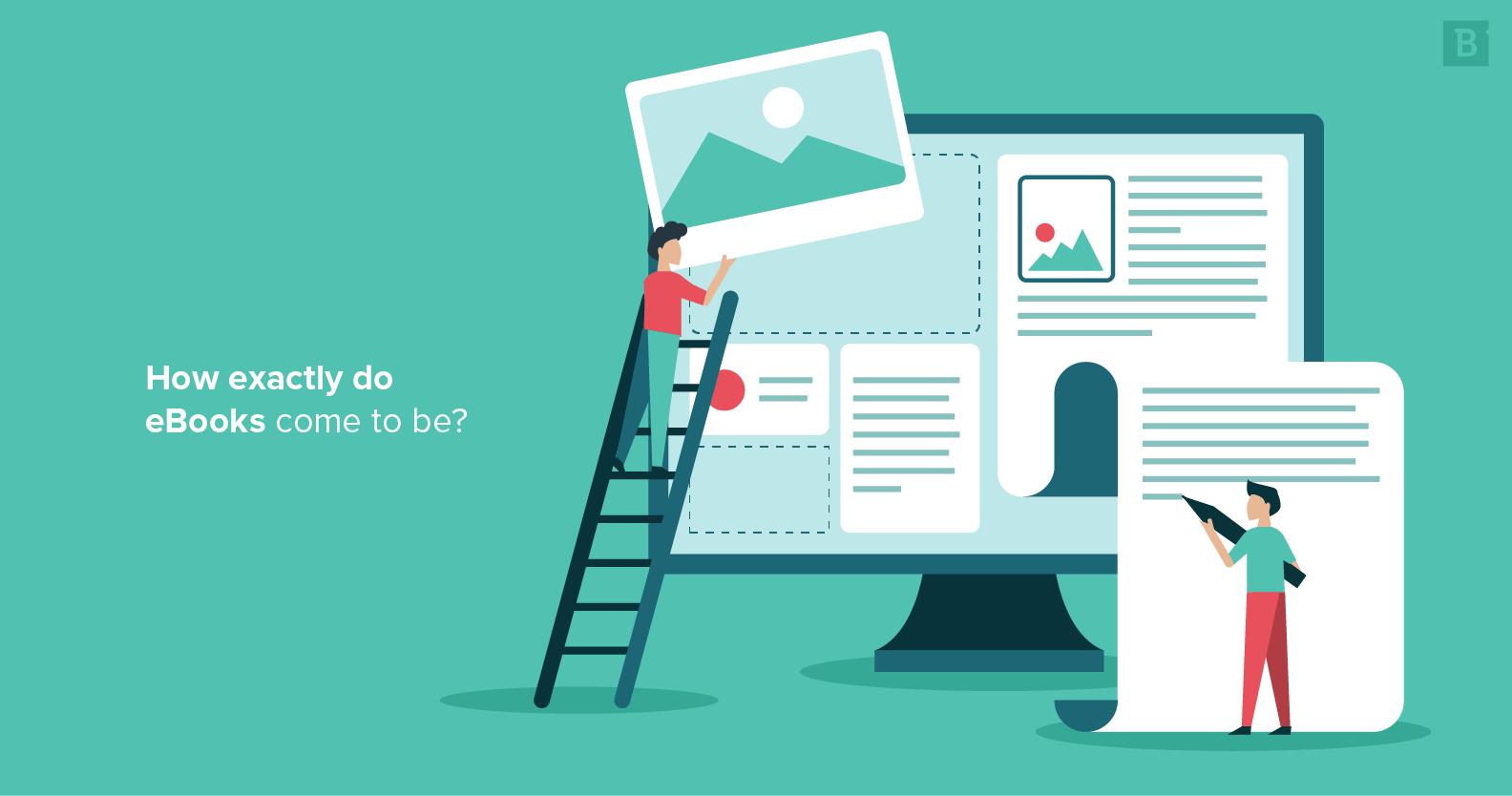
Why create an eBook?
This valuable marketing asset is a surefire way to generate new leads and add prospects to email campaigns. That’s because readers complete an online contact information form in order to download the content.
Along with being incredibly useful gated content, eBooks are a different and engaging way to educate your audience. Plus, the more eBooks you publish, the more likely readers will begin to see your company as a trustworthy thought leader in the space.
How are eBooks made?
These marketing assets are a step above your typical blog post. Not only do you have to write concise, punchy content, but you also have to turn those words into an eye-catching yet professionally designed document that’s worthy of a download.
It’s a process – but certainly not one that you can’t handle. Creating an eBook involves the following steps:
1. Ideation
Your eBook is born from a targeted and well-researched idea. This topic should be relevant to your audience, complete with helpful information that people can benefit from relatively immediately.
If you’re struggling to find a good topic direction, ask yourself questions like:
- Is there a process, product or service that you can educate your customers on?
- What kind of content are your consumers already engaging with? (Hey there, SEO research!)
- Can you interview subject matter experts internally for compelling perspectives?
- Do you have interesting research results or data to share?
- Are there any company or industry updates that would benefit from coverage?
Pro tip: Outline your topics before committing to the writing stage. This will give you a chance to organize your thoughts – and guarantee you have enough to say about the topic.
2. Copywriting
eBooks are simple, succinct and didactic. Save the dense chunks of copy for white papers because these should be easily digestible pieces of content with language that’s clear and filled with bite-sized phrases and bulleted lists.
Writers should use active voice and storytelling techniques to engage readers, using second person to reach the audience on a personal and casual level. Every word and sentence contributes to the overall message, which means there’s no room for fluff.
Remember that eBooks are inherently visual, so make it easy to translate the copy into a designed format with plenty of data, statistics, bullet points and quick facts. Break up the text into “chapters,” which are usually just one or two pages of the eBook.
If you’re creating an eBook for a client, you’ll want to send over the completed copy for approval before heading to design. That way, you can make copy edits ahead of time and send only the final version to the designer.
Pro tip: A good rule of thumb is to cap each page at a concise 125 words or less to make room for the design elements.
3. Design
Once the copy is complete, it’s time for a designer to put their visual spin on the content. They’re job is to select the data points and concepts that are best to illustrate on each page. The trick is to highlight the quotes and statistics that add value to the content and have enough oomph to stand alone if they’re the first element that draws the eye in.
As with any professionally designed piece of content, eBooks should be consistent in colors, theme and branding. Unless a client has specific requirements, the designer also has creative license to determine if illustration, photography or a mix of design elements is the right move.
Pay close attention to the cover page, as this is the main visual you’ll use to promote the content – and your audience certainly won’t hesitate to judge your eBook by its cover.
Pro tip: Whitespace is your friend. When written well, eBooks allow for simple and clean designs.
4. Publication
Once designed, export that beauty into a PDF and get prepared to distribute that precious link. What link do you ask? Great question.
You should create a landing page where readers can download your eBook. Include an enticing description of the eBook that hints at the concepts covered, leaving readers so painfully curious that downloading the content is a no-brainer. Make sure there’s a contact information form for visitors to complete in order to access the eBook. This is how you turn those viewers into promising leads you can follow up with. It should look something like this.
If you already have a dedicated resource center on your website or blog for content like eBooks and white papers, be sure to introduce your new eBook to the crowd.
Pro tip: Most descriptions benefit from a bulleted list of the new information readers will gain from the content. Keep it short, sweet and valuable.
5. Distribution
Once your dedicated landing page exists, you can use that destination URL to start promoting your eBook. Your email list is a great place to start, and head to your social media channels to share the link not long after. If your lists of emails and followers aren’t as large as you’d like, consider using paid marketing to boost your reach.
You can also use your blog to promote your eBook. Usually eBooks cover topics that are easily broken down into smaller topics to be covered in blog format. Use a CTA at the end of the posts to encourage readers to download the eBook for more information on the topic.
Pro tip: Track the eBook’s performance to measure its success. How many people downloaded the content? How did your followers react to social posts linking to the eBook? Consider sending out a survey to get feedback on the content. Use the data to make your next eBook even better.
Don’t run off to make your eBook quite yet – we’ve got more for you.
For starters, an important side note: It takes time to create such an impactful marketing asset – so be sure to plan ahead. Turnaround time depends on writer and designer workloads, as well as the rate of client feedback and approvals. Generally speaking, a content marketing agency can turnaround an eBook in about a month.
Now onto the examples for your viewing pleasure – and valuable reference, too, of course.
What does an exemplary eBook look like?
In the Brafton world, we recently published “The Mostly Serious Guide to 21 Marketing Buzzwords in 2018.” Not to toot our own horns, but the copy is pretty funny. Readers not only walk away with valuable information on marketing buzzwords but also a chuckle or two.
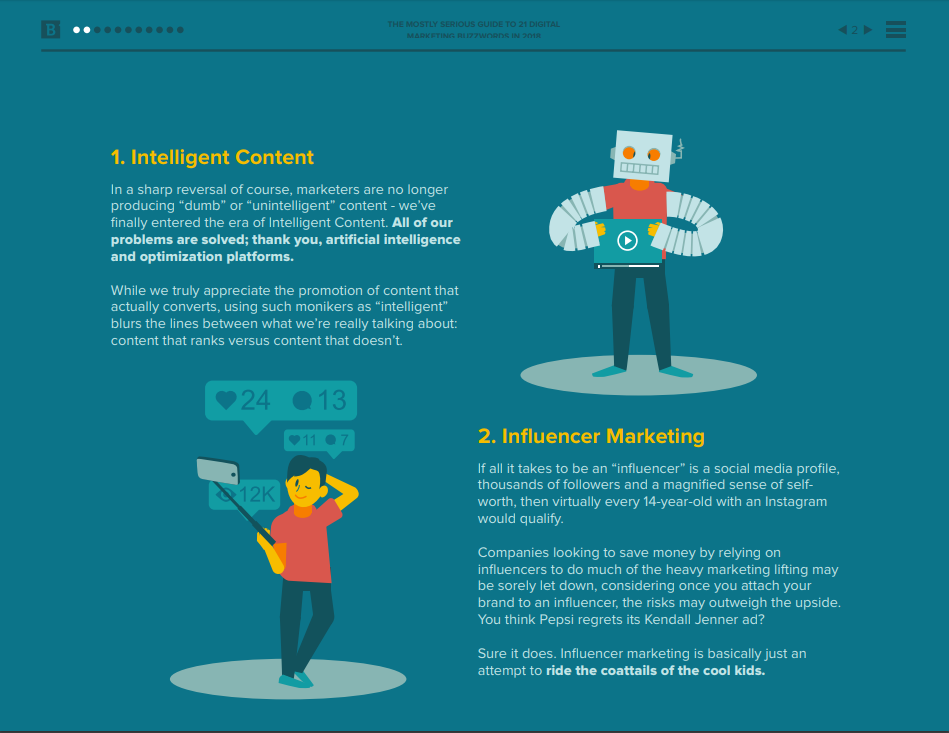
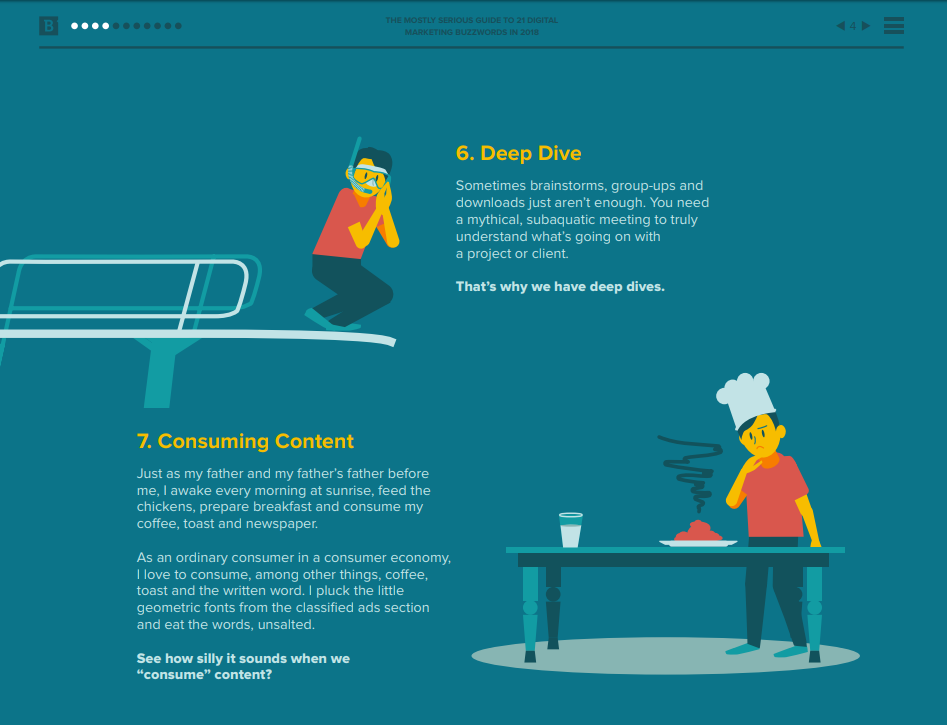
Without data points to highlight with this particular eBook, the illustrations instead complement the humorous and fun tone of the copy. And while we did stretch the word count on each page, there’s sufficient whitespace to make up for it.
Here are some other examples of eBook pages created inside the walls of Brafton – but this time for our clients.
Here are those enticing cover pages we were talking about:
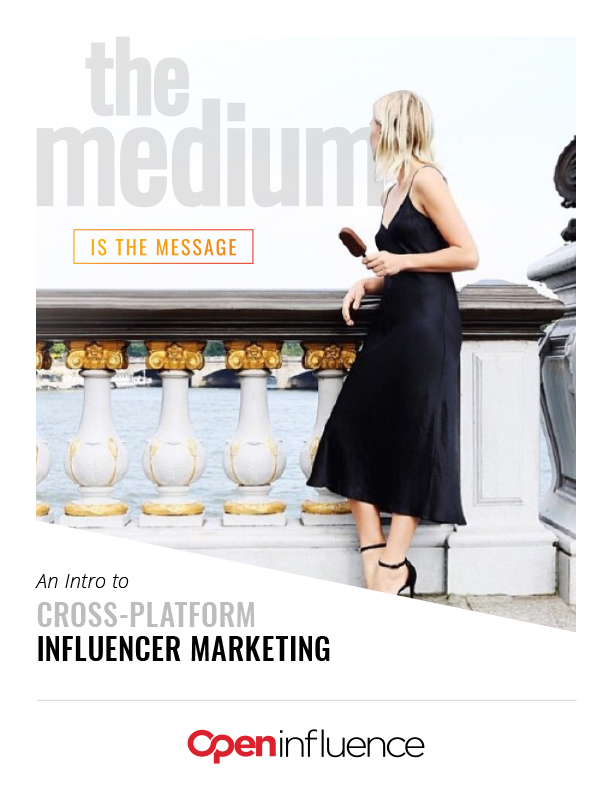

And then we get to the inner details:

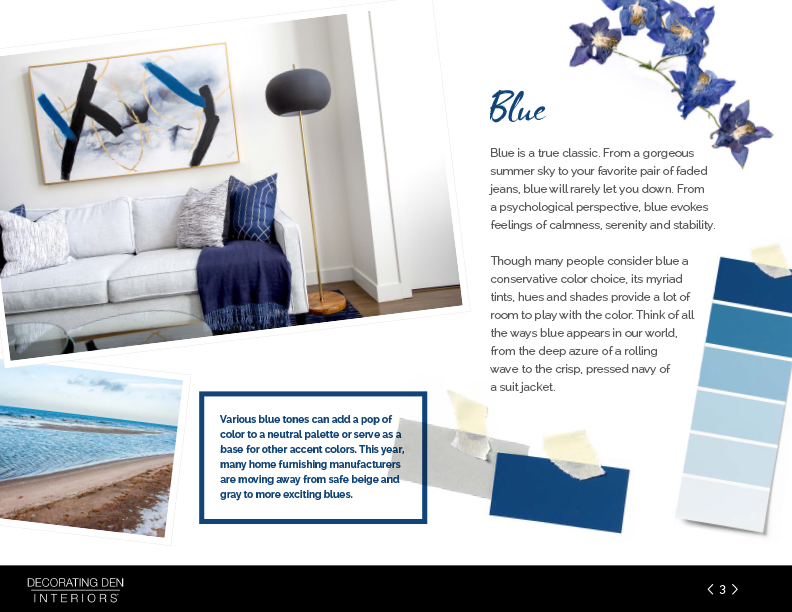
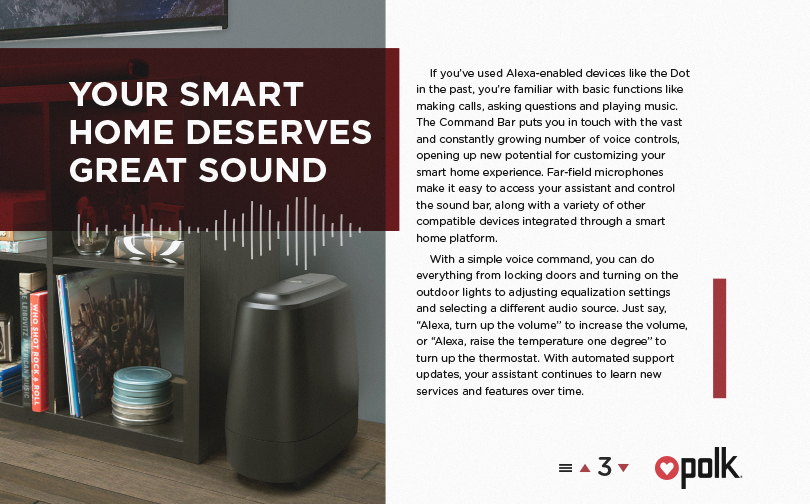
If you’re in the market for more inspiration, check out these impressive B2B eBook examples.
What will your eBook look like? There’s only one way to find out.





